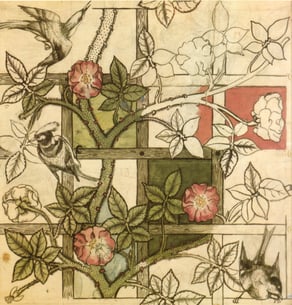Among book collectors, fine press editions are some of the most sought-after books on the primary and secondary market. Painstakingly crafted and existing only in limited quantities, these books are as beautiful as one might expect for something so lovingly created. Today, we take a look at the roots of the fine press movement as well as how organizations today are dedicating themselves to seeing this time-intensive labor of literary love going in an era where mass printing is easier than ever before and when more and more people are turning to electronic versions of books rather than physical copies.
What is Fine Press?
 Fine press, also known as fine publishing, is the practice of producing works of literature that have great intrinsic and artistic value as objects, considering not just the work of the subject matter but the beauty and quality of the book itself.
Fine press, also known as fine publishing, is the practice of producing works of literature that have great intrinsic and artistic value as objects, considering not just the work of the subject matter but the beauty and quality of the book itself.
The fine press is often independent, though is not entirely absent in the world of commercial publishing. While often falling under the category of small presses, fine presses themselves often limit themselves to very small print runs, creating limited editions of items that are often sought after by collectors, differentiating themselves from small presses who will reprint books with more editions should time and demand allow for it.
This scarcity often causes the prices of fine press editions to skew upward, making them beautiful and often expensive additions to collections. The art of book printing is truly edited by fine presses throughout the United States and the World.
William Morris and the Arts and Crafts Movement
The fine press movement can trace itself back to one person: English artist, writer, and designer William Morris. Working in the height of the rapidly-industrializing world of Victorian England, Morris became exhausted and disheartened by the movement away from artisan and homemade works toward mass-produced goods.
With his close friends, architect Philip Webb (Lincoln's Inn, Arts and Crafts Architecture) and pre-Raphaelite artists Dante Gabriel Rosetti (Proserpine, The Blessed Damozel) and Edward Burne Jones (stained glass in St. Cecelia, Trinity Church), Morris founded Morris, Marshall, Faulkner, & Co, a decorative arts firm dedicated to handcrafted goods and textiles, which quickly became fashionable and influenced the design of many homes and churches at the time.
Later, he assumed complete control of the business, renaming it Morris & Co. Both iterations of the company were known for their textiles, furniture, stained glass, and wallpaper (the latter for which Morris himself is best known today, in addition to his status as one of the founders of the modern fantasy genre). These men and other artists were the earliest contributors to the Arts and Crafts movement, a push toward handcrafted items emphasizing that design and production should not be so far removed. This concept greatly influenced his move toward the advent of the fine press.
 In 1981, he founded the Kelmscott Press, housed in Kelmscott House, a home designed for him by Webb, which often served as a retreat for his friends and fellow artists. Though the Kelmscott press existed for less than ten years, it produced many limited-run, fine press volumes.
In 1981, he founded the Kelmscott Press, housed in Kelmscott House, a home designed for him by Webb, which often served as a retreat for his friends and fellow artists. Though the Kelmscott press existed for less than ten years, it produced many limited-run, fine press volumes.
The books printed by Morris were known for their extreme quality. Typesetting was all done by hand, the paper was handmade, and books were printed with a hand press. In terms of design, the fifty books printed by Morris were influenced by medieval style design, with pages often bordered with flowers and animals. His goal was to achieve the beauty of medieval illuminated manuscripts. This effort culminated in his most famous work, The Works of Geoffrey Chaucer, often known as the Kelmscott Chaucer.
Fine Press Movement
Morris' work and goals took off. The Arts and Crafts movement, and by extension, the Fine Press movement, spread throughout the United Kingdom, taking root in the United States in the early twentieth century. One of the most well-known and influential American presses was the Roycroft Press, founded in 1895 just outside of Buffalo, New York. Roycroft Press was named for two seventeenth-century printers, Samuel and Thomas Roycroft.
The press's founder, Elbert Hubbard, was inspired by Morris and his Kelmscott Chaucer, so he published his manuscript Little Journeys in the spirit of the fine press. While the Roycroft Press and community eventually petered out, it remains one of the most known presses.
After the folding of the Roycroft Press, most of the fine presses found in the United States were centered in California. One such press, Grabhorn Press, proved to be instrumental in preserving America's fine press movement. Founded by Edwin and Robert Grabhorn in 1920, the produced numerous fine books throughout their business.
Eventually, after the younger Grabhorn's death, the press folded. Andrew Hoyem, a printer who worked with the Grabhorns for seven years on fine print endeavors, founded Arion Press in 1924 as a successor to Grabhon, preserving their fine press methods. The press publishes three or four books a year, turning out a small number of limited and beautiful books considered some of the most beautiful produced today by any publishing company, commercial or fine.
Hoyem also founded the Grabhorn Institute, an organization dedicated to preserving the methods of fine book printing. The institute is a living museum where visitors can learn about and watch typecasting, bookbinding, and letterpress binding by skilled printers and apprentices dedicated to keeping this amazing tradition alive.









